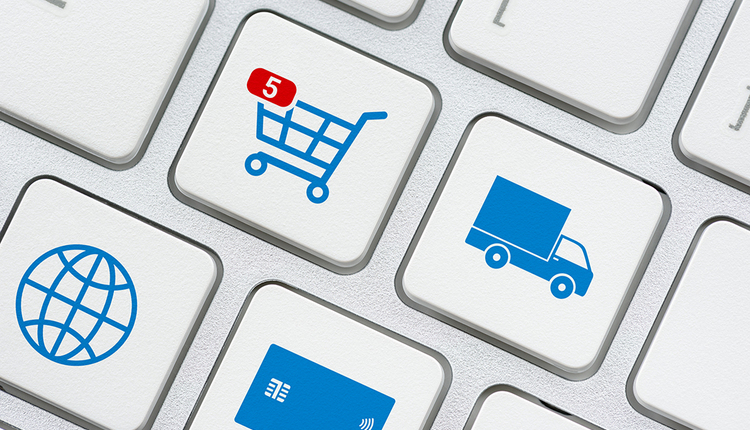Perhaps you’ve thought about improving your company with packaging automation for a while but haven’t taken action. On the other hand, maybe you realize that many of your competitors have automated their packing lines but feel unsure that you should follow their lead.
Here’s a look at why automation can pay off for companies that choose to use it. The breakdown of benefits should help you make a more confident and informed decision about how this technology could fit into your business.
1. Equip the Company to Meet Needs
Investments in automation can support business growth. It’s smart to ask several questions when determining the timing of your automated equipment purchases.
For example, which aspects of your packaging line include the most repetitive actions? Where do bottlenecks occur? Automation could quicken line changeover times or move goods from one area of the packaging line to another.
Once company leaders know where the weak points are, it’s easier to envision how automated machines could address them. Besides looking at current needs, decision-makers should also consider company goals for the next several years. Maybe some of the planned milestones concern a company offering more packaging options to its clients or increasing total output. Automation can make both of those things happen.
As people weigh the pros and cons of automating a packaging line now, they often find it difficult to justify the expenses. However, they should also consider the likely costs of not automating soon.
For example, will they have trouble attracting customers? Could the failure to automate mean that companies cannot scale to meet loyal customers' new requests? Staying mindful of these potential consequences often encourages corporate leaders to automate faster than they otherwise might.
2. Achieve More Flexibility to Grow the Business
Bringing automation to a packaging plant can also stimulate ongoing growth that supports all brands under a company’s umbrella. Take the Just Born candy brand, for example. It recently completed a massive automation project to perfect the packaging of Peeps. The marshmallow chicks are Easter favorites, but they’re also extremely fragile.
If the formed marshmallows touch each other after processing, the sugar coating rubs off. Additionally, Just Born uses a different marshmallow recipe than the ones people buy by the bag for roasting over a campfire. The company takes pride in how its treats are softer and don’t include the additives other brands use, including gelatin and starches.
Automating the Just Born packaging line did not cost any jobs. However, it directly addressed the company’s challenges associated with a shrinking labor force due to more people reaching retirement age. Moreover, company leaders were able to move employees into different parts of the business. For example, Just Born hopes to grow the areas of the company associated with the Mike & Ike and Hot Tamales candies, and automation makes that feasible.
3. Increase Information Access
Packaging automation also gives people more data. Instead of making assumptions based on experience, they can rely on hard statistics provided by the interfaces that connect to specialized machines.
For example, a dashboard might show the number of products packaged per hour or confirm whether the number of packaged items goes up or down on particular shifts. Then, managers have reliable insights about productivity levels and other characteristics that can influence whether a company profits or operates at a loss.
Data can also help people get to the bottom of problems associated with the packaging line. For example, some automated sensors can tell when machine components are about to fail before they cause service disruptions. Alternatively, suppose the statistics show an unusual decrease in a primary metric. In this case, that change could cause a service technician to look closer and identify the cause and possibly schedule maintenance for the machine.
4. Remove or Reduce Labor-Intensive Processes
One of the primary gains companies hope to make through packaging automation is removing labor-intensive steps — particularly manual ones. It’s not always possible to get rid of every such process. However, assessing the packaging line is an excellent starting point.
For example, which actions are prone to errors or often create bottlenecks? Remember that automation typically works best when applied to repetitive tasks.
Manual tasks like wrapping or transferring items on the packaging line are often among the duties flagged as taking the most time. However, they differ in each company and according to the kind of item handled. After identifying the most appropriate steps for automation, calculate the time and labor costs to assess the eventual payoff. Doing that could be crucial for proving to superiors and decision-makers that now is the best time to automate.
If the cost of automating proves a major concern, the machine-as-a-service (MaaS) or usage-based model could address that challenge. In that case, the equipment supplier assumes many of the costs, such as installation, employee training and maintenance. The customer then pays an agreed-upon rate, such as per case packed. Customers and suppliers can both access metrics, making it easy to see precisely how machines cut down on the tasks that once took the most time.
5. Adapt Faster as the Marketplace Changes
The COVID-19 pandemic caused upheaval for almost all industries, particularly as companies faced mandated lockdowns, social distancing for workers and the potential increase in packaged items. For example, as many people dealt with stay-at-home orders, they decided that the safest and easiest thing to do was shop online. This decision meant that the items they ordinarily bought in-person got packaged and shipped to their doors instead.
A recent IBM study indicates the online shopping boom will continue during the 2020 holiday season. More than 60% of people said they would buy products through the internet, and only 28% planned to purchase items in physical stores.
However, there is a rising demand to select and pay for stuff online, then pick the merchandise up in-person. This choice does not require as much automated packing equipment because the goods do not get sent to consumers’ doorsteps.
The novel coronavirus is just one example that caused companies to adapt to new ways of operating. Some representatives had to completely change the layouts of their factories in a matter of weeks. Elsewhere, decision-makers realized that the pandemic presented the perfect opportunity to accelerate a digital transformation featuring robots and other automated machines.
You may also discover that investing in automation makes your company more agile and responsive to disruptions.
Consider Packaging Automation an Option Worth Exploring
Some company leaders decide that something prevents them from making immediate investments in technology to automate a packaging line. Even in that case, you can still look forward to the five advantages mentioned here, among others, when your business does get on board with automation.
In any case, maintain a viewpoint that automation could help your enterprise make notable improvements, even if you don’t change every process at once.
Megan R. Nichols is a STEM writer and the editor of Schooled By Science. She enjoys writing about the latest news and trends in manufacturing, the supply chain, and science. To keep up with the latest news, follow her on Twitter.











